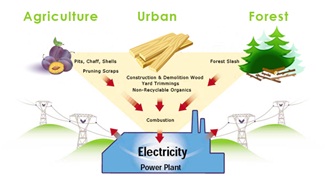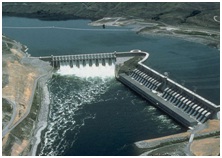Global warming is defined as the gradual increase in the overall temperature of the earth’s atmosphere that attributes to the Greenhouse Effect that is caused by the increased levels of carbon dioxide and other such pollutants.
Finding clean non-conventional sources of renewable energy sources such as wind power with the use of wind turbines, solar energy, or tidal power is vital when trying to achieve sustainable development and find alternative sources that do not contribute to the carbon footprint we are leaving on the environment.
Wind, solar, and hydroelectric energy are increasing in popularity and with new advances in technology and further research, we can find better solutions that are more cost-effective and efficient without contributing to Global Warming and the pollution of our environment.
The Effects of Global Warming
Effects due to global warming caused by use of fossil fuels nuclear power plants and other non-renewable sources can include rising sea levels due to thermal expansion because of melting glaciers and ice sheets, warming of the ocean surface, and increased temperature stratification.
One of the best ways to reduce these effects of global warming is to reduce the use of fossil fuels. When we burn fossil fuels, we increase the levels of greenhouse gasses that are being introduced into the atmosphere.
Green Space
 “Green space” refers to areas of grass, trees, and other vegetation that are conserved and set apart for recreational purposes typically in urban environments. Many environmental benefits go along with Green space including water quality protection, reduced heat buildup, reduced soil erosion, improved air quality, natural resource conservation, and reduced temperatures.
“Green space” refers to areas of grass, trees, and other vegetation that are conserved and set apart for recreational purposes typically in urban environments. Many environmental benefits go along with Green space including water quality protection, reduced heat buildup, reduced soil erosion, improved air quality, natural resource conservation, and reduced temperatures.
Trees are a natural way to remove pollutants from the air which provides better air quality. Trees also offer shade while reducing heat build-up within an area. Green spaces can also absorb rainfall and remove pollutants. The pollutants are broken down by the roots and the soil.
Urban green spaces can also help transport rainwater that could otherwise flood certain areas. The capability to do this cuts down on the cost of having to find other ways to control water in coastal and flood areas and minimizes the need to build more pipes or holding tanks.
Biomass Energy
 Biomass is an energy resource that is developed from organic materials and is used as a renewable source of energy that can be utilized to create electricity and other forms of power. Biomass contains stored energy. Plants are absorbing the sun’s energy through the process of photosynthesis and, when biomass is burned, the energy is released as heat.
Biomass is an energy resource that is developed from organic materials and is used as a renewable source of energy that can be utilized to create electricity and other forms of power. Biomass contains stored energy. Plants are absorbing the sun’s energy through the process of photosynthesis and, when biomass is burned, the energy is released as heat.
Burning biomass does release carbon dioxide into the air but the plants take that carbon dioxide and use it to grow leaves, flowers, branches, and stems. Therefore, the carbon dioxide that is released is being returned to the plants and absorbed.
Biomass can create electricity or be converted into fuel and biodiesel or be fermented to produce ethanol. Biomass reduces our dependence on fossil fuels for the production of electricity, heat, and steam. It is always available and can be renewed. Biomass can also help reduce the number of resources that end up in landfills. Biomass is recycling waste that could be potentially harmful to the environment and it is being turned into something that we can use for sustainable development.
The carbon dioxide emissions are controlled and there are no fumes or emissions that are being released into the air to cause harm or destruction to the ozone layer or increase the effects of greenhouse gasses which contributes to global warming.
Hydroelectric Energy
 Hydroelectricity is a natural energy resource that involves the ability to harness the energy that can be produced by moving water. The energy from the moving water is then turned into a useful power source which reduces dependence on fossil fuels and other nonrenewable resources and limits the effects we have on to the environment, including reducing the threat of global warming.
Hydroelectricity is a natural energy resource that involves the ability to harness the energy that can be produced by moving water. The energy from the moving water is then turned into a useful power source which reduces dependence on fossil fuels and other nonrenewable resources and limits the effects we have on to the environment, including reducing the threat of global warming.
The water has to be moving at fast speeds so that it can spin a turbine. The turbine then rotates and powers a generator that produces electricity. There is also something known as pumped storage that is utilized during off-peak times. The water from a lower reservoir is pumped into a higher reservoir and is stored to create hydropower later in the day.
Hydroelectric energy is being researched and studied more and more as the years pass as we try to limit the effects this clean and renewable source of energy has on marine life. Due to the reduced flows that hydropower projects can create, there is a threat posed to the water temperature and the habitat of the animals and plant life. If there is a reduced amount of water in a river, for example, it greatly reduces the oxygen levels in the water and this can damage the water quality.
The damage and effects of hydroelectric power depend on the way that the system is operated. Flow releases should be managed and patterns should be monitored. Voluntary certification programs are also being put in place for companies if they want to help limit the environmental impact they are having while operating the equipment. The certification can contribute to ensuring that the river is flowing correctly, the water quality is good, the cultural resources are protected, and the animals and their habitats are being protected.
Conclusion
Many non-conventional energy sources can be employed to help reduce the threat of global warming. Any energy source that is cost-effective and renewable and reduces our dependence on fossil fuels without emitting any pollutants or other toxins into the atmosphere is a good start.
Non-conventional energy sources include solar energy, tidal energy, geothermal energy, and wind energy just to start with. The source of non-conventional energy typically comes from a flow source, and these resources cannot be exhausted or depleted. Along with the technological development and advances in non-conventional energy sources, we see reduced costs in the future and less negative impact being placed on our environment.









